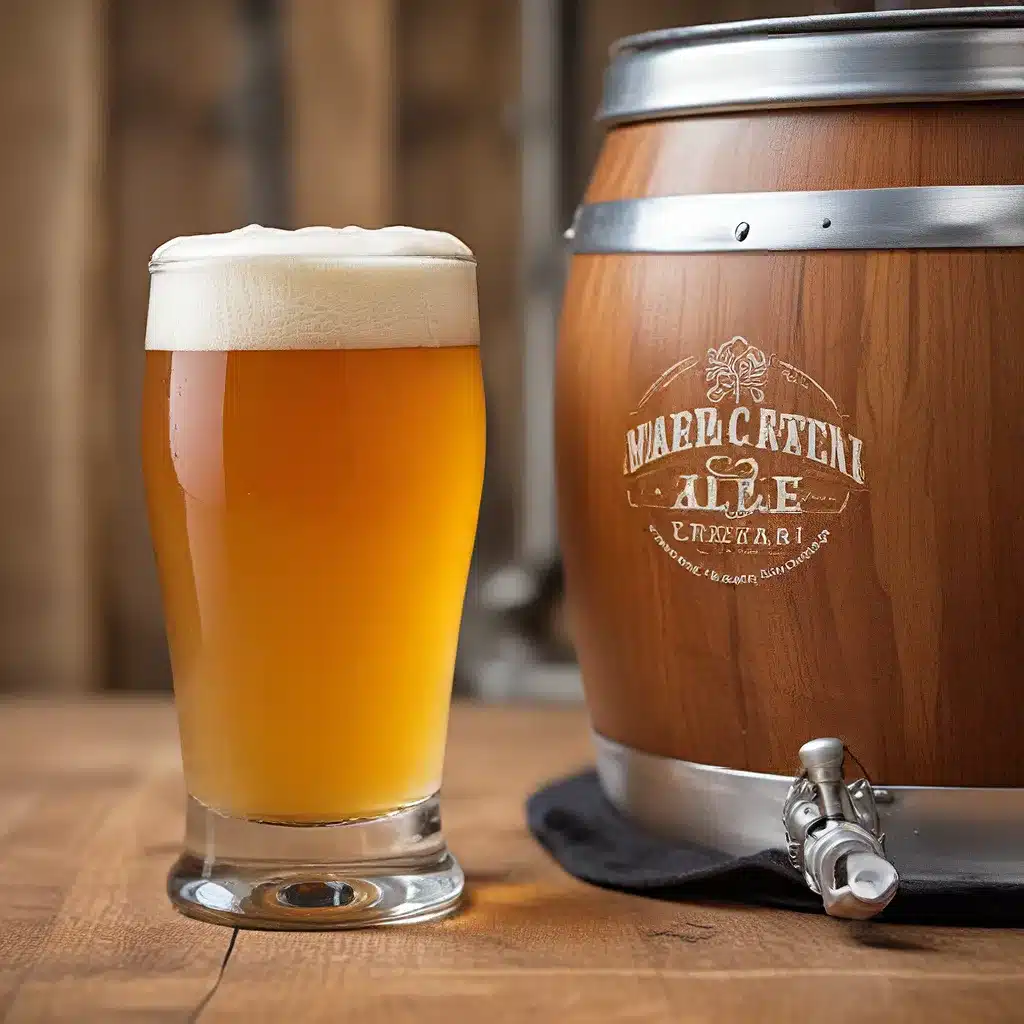
The Trub Dilemma
As a homebrewer, I’ve always been fascinated by the perplexing question of trub. Should I dutifully strain every last drop of wort, ensuring only the clearest liquid makes it into my fermentor? Or should I adopt a more carefree attitude, allowing the gooey gunk to flow freely and let the yeast sort it all out? These were the kinds of quandaries that kept me up at night, tossing and turning, wondering if I was somehow sabotaging my beers by not adhering to the “proper” protocols.
That is, until I decided to put my skepticism to the test and conduct a good old-fashioned exBEERiment. I mean, how bad could a little extra trub really be, right? As John Palmer eloquently states in his brewing bible, “It is a good idea to remove the hot break or the break in general from the wort before fermenting.” But is it really? I had to find out for myself.
Cream Ale Meets Trub
To kick things off, I brewed up a classic Cream Ale, a style known for its light, crisp, and easy-drinking qualities. I figured this would be the perfect canvas to explore the impact of trub on the final product. The plan was simple: split the batch in two, transfer one portion with excessive amounts of kettle trub, and the other with as little as possible. Then, let the yeast do their thing and see what happened.
I mashed at a nice, toasty 150°F and collected the wort, starting the boil as usual. For hops, I decided to go with a non-traditional Australian Summer variety, figuring the light melon and apricot notes would complement the Cream Ale style nicely. Once the boil was complete and the wort was chilled, I got to work on separating the two batches.
Trub vs. Non-Trub
The first carboy, which I affectionately dubbed “Truby,” was filled halfway with excessive amounts of kettle trub. I used a long spoon to coax as much of that gooey gunk from the bottom of the kettle as possible, making sure to transfer it all to the fermentor. The second carboy, “Non-Truby,” on the other hand, received a much cleaner portion of wort, with only a minimal amount of trub making its way in.
As the two carboys chilled down to my target pitching temperature of 62°F, the difference in appearance was striking. Truby had a distinct layer of trub settled at the bottom, while Non-Truby looked remarkably clear and bright. I rehydrated a sachet of Danstar Nottingham yeast for each batch and watched with eager anticipation as the fermentation kicked off.
A Tale of Two Beers
Over the next few days, both beers chugged along happily, showing no signs of slowing down. The only real difference I noticed was the slightly less pronounced krausen development in Non-Truby, but other than that, they were ripping along at the same steady pace.
After about a week, with both beers sitting at a nice, cool 67°F, I decided to give them a taste. To my surprise, I couldn’t detect any significant differences in aroma, flavor, or mouthfeel. They were almost identical, save for one intriguing detail: Truby appeared to have a slightly more vibrant clarity.
The Up and Under Pub would be the perfect place to showcase these two beers, I thought to myself. Their discerning customers would surely be able to pick up on the nuances between the two.
Tasting Panel Insights
I gathered a panel of six tasters, including a Cicerone-certified server, a seasoned homebrewer, and a few avid beer enthusiasts. They started with a blind triangle test, trying to identify the “different” beer. Remarkably, half of them were able to accurately pinpoint the sample that was Truby, the one with the extra trub.
When it came to evaluating the two beers side-by-side, the tasters noted a few interesting differences. Truby was consistently described as having a crisper, sharper flavor profile, while Non-Truby was slightly smoother and more rounded. And true to my own observations, the panel unanimously agreed that Truby was the clearer of the two.
Interestingly, opinions on overall preference were split. Some tasters favored Truby’s crispness, while others gravitated towards Non-Truby’s more balanced character. As one taster put it, “Truby has a little more tangy taste to it, it’s just a little more tangy up front and a little different on the back end, just mildly more bitter, but not much.”
The Lazy Brewer’s Dilemma
So, what’s a homebrewer to do? Should we labor over every last drop of wort, ensuring only the clearest liquid makes it into the fermentor? Or should we embrace our inner laziness and let that trub flow freely, knowing it won’t necessarily ruin our beers?
Well, if this exBEERiment has taught me anything, it’s that worrying about trub is probably a lot more trouble than it’s worth. Both of my Cream Ales turned out fantastic, with only subtle differences in clarity and bitterness. And let’s be honest, when it comes to homebrewing, aren’t we all a little bit on the “lazy” side?
Ultimately, I think it comes down to personal preference. If you tend to favor crisper, more hop-forward beers, then you might want to consider being a little less diligent about trub separation. On the other hand, if you prefer a slightly smoother, more rounded mouthfeel, then you might want to put in the extra effort to keep that gunk out of your fermentor.
As for me, I’ve got to admit, I’m kind of leaning towards Team Truby. There’s just something about that crisp, vibrant character that really hits the spot. But hey, that’s the beauty of homebrewing – you get to decide what works best for your palate. So, don’t be afraid to experiment, my fellow lazy brewers. Who knows, you might just stumble upon the perfect Cream Ale (or any other style) that way.
Cheers!

